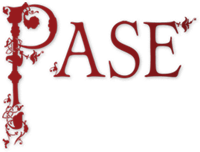Table of Contents
Top of page
Name
Summary
Distribution Map
Property List
Profile
Bibliography
Bottom of page
Maino 2
Maino ‘of Yarnton’ (Oxon.), fl. 1066
Male
DWP
4 of 5
Name
Summary
Maino 2 held a small estate in Oxfordshire TRE assessed at 1 hide; it had formed a part of a larger estate held by Eynsham Abbey TRE, although Maino appears to have had power of alienation over his land. The value is unknown, but would have been just over £1 if the value of the larger estate was divided in the same proportion as the hidage assessment.Distribution map of property and lordships associated with this name in DB
List of property and lordships associated with this name in DB
Holder 1066
| Shire | Phil. ref. | Vill | DB Spelling | Holder 1066 | Lord 1066 | Tenant-in-Chief 1086 | 1086 Subtenant | Fiscal Value | 1066 Value | 1086 Value | Conf. | Show on Map |
|---|---|---|---|---|---|---|---|---|---|---|---|---|
| Oxfordshire | 6,14 | Yarnton | Maino | Maino 'of Yarnton' | Wulfwig, bishop of Dorchester | Remigius, bishop of Lincoln | Roger d'Ivry | 1.00 | 1.05 | 1.47 | C | Map |
| Totals | ||||||||||||
Profile
Maino 2’s small estate was at Yarnton, where the ground slopes gently down to the River Thames to the north-west of Oxford.Although DB states that Maino ‘could go where he wished’, implying that he had the power of alienation over his land, his estate seems to have been part of the original 10 hides granted to Eynsham minster in 1005 (S 911) and DB records that it belonged to Eynsham; yet Maino’s estate was apparently held in the lordship of the bishop of Dorchester TRE and had passed to a tenant of the bishop of Lincoln after the Conquest (Knowles et al. 1972: 48; Crossley and Elrington 1990: 475).
Lewis (1995: 137) suggests that Maino 2 was the same man as the 1086 subtenant of that name at Kiddington, 7¾ miles to the north-west of Yarnton. This is certainly conceivable given the relative rarity of the name Maino even after the Conquest and the proximity of the two estates. However, there is no apparent tenurial or other connection between the TRW tenants-in-chief and subtenants of Yarnton and Kiddington, and at least one Maino occurs as a tenant-in-chief in the adjacent shires of Buckinghamshire and Northamptonshire. In the absence of further supporting evidence, therefore, the suggested identity cannot be sustained.
This was the only estate recorded in DB as being held TRE by someone called Maino and there is no reason to consider him in connection with any other pre-Conquest estate or person, nor can he be associated with any other post-Conquest landholder of that or a similar name.
Bibliography
Crossley and Elrington 1990: A History of the County of Oxford: Volume 12: Wootton Hundred (South) Including Woodstock, ed. A. Crossley and C. R. Elrington (London, 1990)
Knowles et al. 1972: The Heads of Religious Houses: England and Wales 940-1216, ed. D. Knowles, C. N. L. Brooke and V. C. M. London (Cambridge, 1972)
Lewis 1995: C. P. Lewis, ‘The French in England before the Norman Conquest’, Anglo-Norman Studies 17 (1995), 123-44
S: P. H. Sawyer, Anglo-Saxon Charters: An Annotated List and Bibliography, Royal Historical Society Guides and Handbooks 8 (London, 1968), revised by S. Kelly, R. Rushforth et al., The Electronic Sawyer: Online Catalogue of Anglo-Saxon Charters, published online through Kemble: The Anglo-Saxon Charters Website, currently at http://www.esawyer.org.uk/about/index.html
